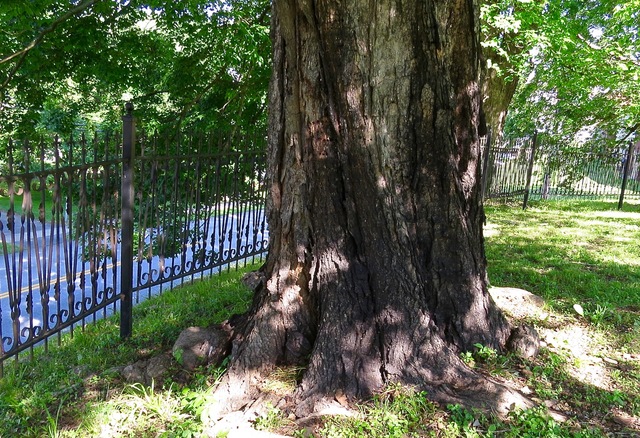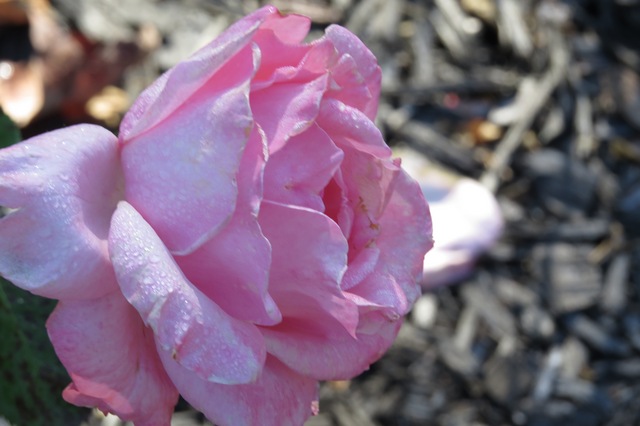| ||||||||||
Dr. Ronald P. Rogers CHIROPRACTOR Support for your body's natural healing capabilities 270-384-5554 Click here for details 


Columbia Gas Dept. GAS LEAK or GAS SMELL Contact Numbers 24 hrs/ 365 days 270-384-2006 or 9-1-1 Call before you dig Visit ColumbiaMagazine's Directory of Churches Addresses, times, phone numbers and more for churches in Adair County Find Great Stuff in ColumbiaMagazine's Classified Ads Antiques, Help Wanted, Autos, Real Estate, Legal Notices, More... 

|
Remembering Mother: Growing up on Jamestown Hill A Mother's Day Story by Wilma Jean Waggener Cravens. The Tree Root Village: Making do and making believe Click on headline for story with photo(s) By Wilma Jean Waggener Cravens Story composed by phone 13 May 2017, transcribed by Ed Waggener When we were growing up on Jamestown Hill, we didn't have a lot of spending money, and not a lot of store bought toys. But we did have safe neighborhoods and plenty of imagination to make do - with make-do toys - at play. Sometimes all of the many kids living at the big two-and-a-half story house and a few of the dozens of neighborhood children of all ages. I remember the exposed roots on the maples on the Ralph Willis side of our yard, and the surrounding "lawn" practically devoid of grass where barely any other vegetation, besides those wonderful shade trees, grew. It would not have been a Southern Living example of a great Southern lawn, but it had it's advantages. Today's kids probably can't even imagine what a playground it was. Nothing could have provided a better kit for an imaginary village. There were no trips to the store. No unboxing, no breakable plastic toys to ruin a set. Tools were sticks and spoons, maybe a screw driver "borrowed" from Daddy's toolbox - that was a daring, punishable act. Fill dirt was excavated on-site, with never a thought of buying cello-bag of fake dirt back then? Yet, the villages we built were as complex as Legolands of today. Roads were engineered in the way many public roads were engineered back then: They took the route of least resistance. The play towns started spontaneously. They weren't part of a rigorous calendar like the ones Moms rule kids lives with today. And they weren't prompted by adult's suggestions if we ever dared complain there's nothing to do. We didn't dare say that. It wouldn't have gained any sympathy. For Momma, and all mothers of the day, an answer came swiftly. It might be "The tomatoes need hoeing." or "Your room needs cleaning." Never, "What's what's wrong with this town? No wonder you're growing up wild as a rabbit." The play they might suggest was "go outside and play." We just weren't allowed to say we were bored. Or that there's nothing to do in this town. The tree root village arose spontaneously started when we were just talking, and one of us would suggest, "Let's p'like we're have our own town to run." A tree root village would often have a post office, a dry cleaners, a shoe repair shop or two; a department store and always, an "E. Campbell's," what we called the biggest store we new, "Mr. Campbell's," officially "Columbia Supermarket." Mr. Garrison's service station, which happened to sell gas, (not today's version with gas sales and no service, Lynn's excepted) might be part of the tree root town, and any other enterprise which might come to mind. The extent of the tree root town was limited only by our interests, or by a brief summer shower, which had it's own possibilities, including mud for mortar. As for toy cars and dolls - there might be some among the family and friends, but mostly, we were left to our own devices. Our toy vehicles could be constructed with penny matchboxes with matchsticks for axles. Trucks and trailer-trucks required discarded nickel sized match boxes or a yellow and red Post Toasties carton; those were harder to come by. Occasionally, tea parties were conducted in a completed town with the tiny glass dolls given to us by aunts as the by-invitation-only guests. I remember that the parties were very sophisticated, with relatively great instruction given on how to daintily hold the cup with the curved little finger, by one of us presumed the role of hostess - "Mrs. Snodgrass," a name we thought most appropriate of the most cultured of all women. And if tiny three inch dolls weren't owned by the playmates they could be built with sticks and grass. The work did consume a lot of energy - but at our house, Momma was 15 feet away in the kitchen, behind open, screened windows, and hunger was soon abated when she finally called "You who-o-o," followed by "Come and get it!". (And yes, Momma did repeat that funny cliche, "Ma's on the table and pa's half et." Soup and sandwiches and there was an abundance of fresh from her "little garden" radishes, Bibb Lettuce, asparagus, okra. Homemade pickles from an earlier season were brought from the cellar - the word "Paramount" was a movie brand, not a food label - and milk and homemade ice tea would be served. At the table Momma might deliver a forced sincere scolding for the tree root town. "You kids made a mess out there. I don't know we'll ever have a sprig of grass on the yard - y'all keep all that digging and wearing out the grass with bicycle paths." Sometimes Daddy's driving around the house was cited, too. Fact is, she meant a lot of that. She'd always compare our yard to Miss Hatties', Miss Miranda's, or one of the picture book yards on Greensburg Street or Lebanon Avenue in Campbellsville, and wonder why, despite all the kids in our family, we couldn't do the same. It would appear, to many, that we Waggeners just grew up volunteer, to make it, if we could, altogether, on our own. But that isn't what Momma did. No mother ever lived who kept her eye on so many of her own and uncounted others. It doesn't take a Mother's Day to remember Audrey Lee Chelf Waggener, when of course we all do. But there's not a day in our lives we don't think of her. - Jean Cravens, Indianapolis. This story was posted on 2017-05-14 11:38:50
Printable: this page is now automatically formatted for printing.
Have comments or corrections for this story? Use our contact form and let us know.
More articles from topic News:
Pollinators subject for 25 May 2017 Adair Garden Club Bro. Don Neat preaching at Flatwoods SBC 11 Jun 2017 Linda Lewis: Looks like Bachelors Buttons to me Revived singing at Flatwoods SBC Sun 28 May 2017 ACHS graduate is Canine Partner Officer in Franklin, KY LWC Twilight Track & Field at Blue Raider Stadium, 14 May 2017 Miss Victoria buys her Grandpa's Whiskers from Park Seeds Deputy Jailer convicted by jury for role in death of detainee Sandra Souders: Trying to find Grandpa's Whiskers Danny Mann, 66, Elk Horn, Taylor Co., KY (1951-2017) View even more articles in topic News |


|
||||||||
|
| ||||||||||
|
Quick Links to Popular Features
Looking for a story or picture? Try our Photo Archive or our Stories Archive for all the information that's appeared on ColumbiaMagazine.com. | ||||||||||
|
Contact us: Columbia Magazine and columbiamagazine.com are published by Linda Waggener and Pen Waggener, PO Box 906, Columbia, KY 42728. Please use our contact page, or send questions about technical issues with this site to webmaster@columbiamagazine.com. All logos and trademarks used on this site are property of their respective owners. All comments remain the property and responsibility of their posters, all articles and photos remain the property of their creators, and all the rest is copyright 1995-Present by Columbia Magazine. Privacy policy: use of this site requires no sharing of information. Voluntarily shared information may be published and made available to the public on this site and/or stored electronically. Anonymous submissions will be subject to additional verification. Cookies are not required to use our site. However, if you have cookies enabled in your web browser, some of our advertisers may use cookies for interest-based advertising across multiple domains. For more information about third-party advertising, visit the NAI web privacy site.
| ||||||||||






















































